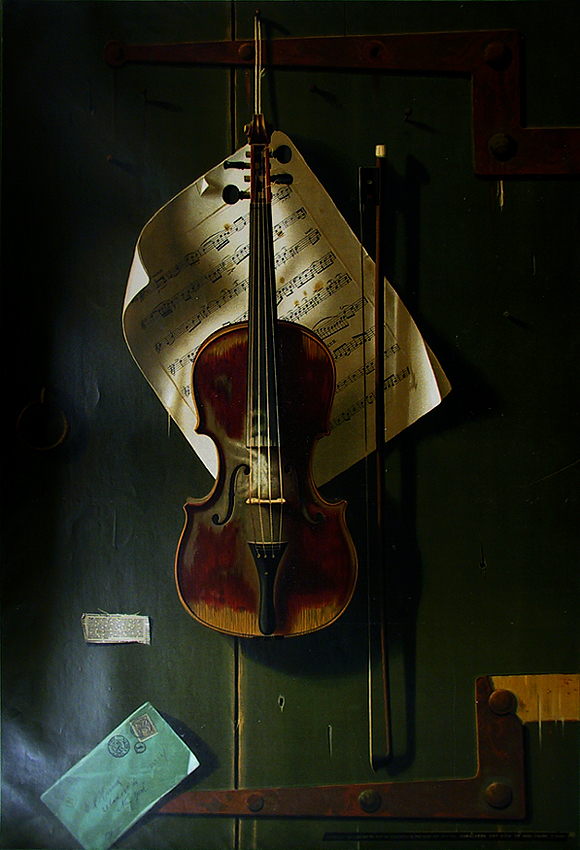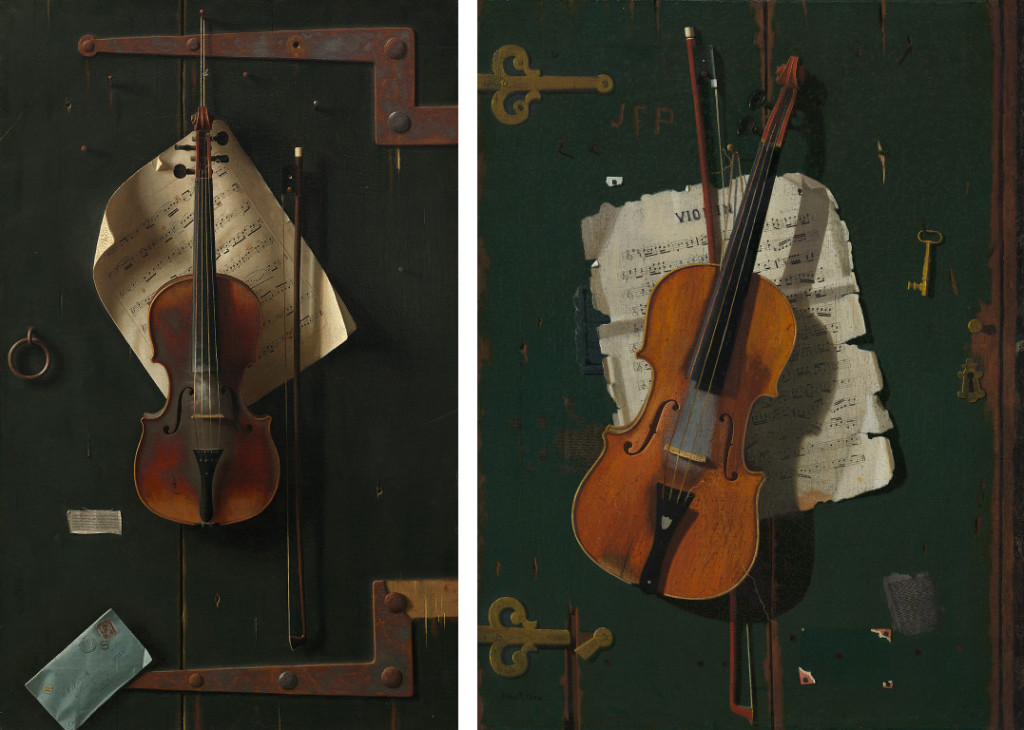The whole painting amazes and fascinates by its illusionism. Harnett’s The Old Violin is the kind of picture people want to touch, since every passage expresses a different texture so convincingly. It seems difficult to believe that the texture is uniformly smooth over the entire surface of the picture, as, of course, it is.
If this were the whole content of The Old Violin it would be a conglomeration of tricky simulations, nothing more,and would lose our interest once we had examined the imitated objects. But it continues to hold us. The reason we are kept in its grip is because it is more than an imitation of visual fact. It is a work of art.

—The public was fascinated by The Old Violin, the somber trompe l’oeil still life created by William Harnett in 1886. People would reach out to touch the violin or try to grasp the envelope to determine if the objects were real or painted. Thanks to a widely distributed chromolithograph, The Old Violin would become an icon of American art, inspiring a group of illusionist painters—including John F. Peto—to make their own versions.—click image for source…
This “natural” painting is not natural at all except from detail to detail. The arrangement of the objects, for one thing, is arbitrary. As an example it is no accident that the bow is placed vertically, lining up with other verticals. The long arms of the hinges are placed on horizontal axes as precise as the verticals, using the hinges to define a kind of secondary frame embracing the other objects.

—Peto’s Old Violin, with its broken string and damaged body, hangs at a precarious angle, while Harnett’s (in better condition) is squarely suspended on the door. Both paintings speak to the effects of time’s passage, the nostalgic associations of music, and the interplay between illusion and reality.
The sheet of music and the envelope are turned at almost forty-five degrees to the verticals and horizontals and are at almost identical angles to one another. Its slight curls and bends serve as transitions to the elegant and emphatic curves played in final contrast with the straight lines such as the curves of the violin’s shell, and the curves of its S-shaped openings. Every object has been very carefully disposed. So, ultimately, this naturalistic picture depends on not-natural elements.
It is beyond a mere imitation, rather, a work of art, an independent object in its own right. The harmonious quiet that pervades The Old Violin because of their arrangement and its expressive elements.





 COMMENTS
COMMENTS